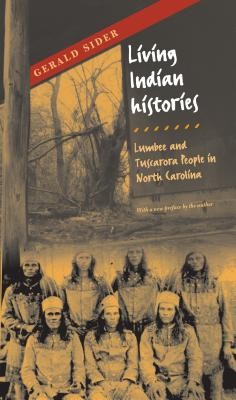
- We will send in 10–14 business days.
- Author: Gerald Sider
- Publisher: University of North Carolina Press
- ISBN-10: 0807855065
- ISBN-13: 9780807855065
- Format: 15 x 23.5 x 2.5 cm, softcover
- Language: English
Reviews
Description
With more than 40,000 registered members, the Lumbee Indians are the ninth largest tribe in the country and the largest east of the Mississippi River. Despite the tribe's size, the Lumbee lack full federal recognition and their history has been marked by a struggle to articulate an Indian identity against the imposition of non-native definitions of Indianness. Gerald Sider explores the complexities of Lumbee tribal identity, focusing on the tribe's socioeconomic and political history from the 1960s through the 1980s and working back to the colonial roots of present issues and questions, including the relationship between the Lumbee and Tuscarora people of Robeson County, North Carolina.
In an extensive preface to this new edition, Sider carries the story forward from the 1980s to the present. Today, both the Lumbee and the reinvigorated Tuscarora are witnessing a major cultural resurgence. At the same time, they are becoming much more dependent upon government programs for their well-being, and socioeconomic inequality among native people is deepening. This new edition explores changing patterns of daily life for native people, their changing relations to social and governmental institutions, and the new tribal institutions that are taking shape in the face of current challenges.
An earlier edition of this book was published in 1993 with the title Lumbee Indian Histories: Race, Ethnicity, and Indian Identity in the Southern United States.
- Author: Gerald Sider
- Publisher: University of North Carolina Press
- ISBN-10: 0807855065
- ISBN-13: 9780807855065
- Format: 15 x 23.5 x 2.5 cm, softcover
- Language: English English
With more than 40,000 registered members, the Lumbee Indians are the ninth largest tribe in the country and the largest east of the Mississippi River. Despite the tribe's size, the Lumbee lack full federal recognition and their history has been marked by a struggle to articulate an Indian identity against the imposition of non-native definitions of Indianness. Gerald Sider explores the complexities of Lumbee tribal identity, focusing on the tribe's socioeconomic and political history from the 1960s through the 1980s and working back to the colonial roots of present issues and questions, including the relationship between the Lumbee and Tuscarora people of Robeson County, North Carolina.
In an extensive preface to this new edition, Sider carries the story forward from the 1980s to the present. Today, both the Lumbee and the reinvigorated Tuscarora are witnessing a major cultural resurgence. At the same time, they are becoming much more dependent upon government programs for their well-being, and socioeconomic inequality among native people is deepening. This new edition explores changing patterns of daily life for native people, their changing relations to social and governmental institutions, and the new tribal institutions that are taking shape in the face of current challenges.
An earlier edition of this book was published in 1993 with the title Lumbee Indian Histories: Race, Ethnicity, and Indian Identity in the Southern United States.


Reviews